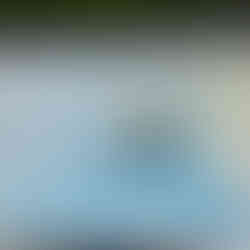Driven to Abstraction
- sarahgoddardartist

- May 25, 2022
- 3 min read
I recently had the pleasure of live audio describing one of my artworks to a visitor with sight loss. It was a great experience to talk them through the paintings, and watch her identify more elements in the paintings as I described them.

One of the paintings that I had created for this exhibition was Pacific Yew: stand close; look up. This is one of a series of three paintings of trees in which I combined a close-up view of the tree trunk on the right hand side of the painting with a view upwards through the canopy on the left-hand side of the painting. This reflects something of how I personally interact with nature. Looking into the distance, in this case upwards towards the sky, I will see views out of focus. But then I love to get up close to look at details and to feel textures.
In this painting, I worked on the canopy on the left in a loose expressive style but then I painted a small section of branch in more detail to reflect how I might spot the bright red berries on the yew tree, and reach out to feel the needles. If you do this yourself, do remember to wash your hands afterwards - yews are deadly poisonous! This is how I move around in nature - because of my own sight impairment, I see the broad landscape out of focus, but then a colour or a hint of a shape will catch my eye, and I will want to get up close to it, to look at it in detail.
The visitor with sight loss really connected with the style of painting that I had adioted, of an out-of-focus background with a small section in the centre in more detail and said that it reflected something of the way that they see the world. It was lovely to find this connection with a visitor with sight loss.

I have often felt like an imposter, as many of us do, whatever our field. But being a visually-impaired visual artist has felt contradictory and something I should hide. However, while working with other artists who face disabling barriers, I didn’t feel like the odd one out, having to explain access needs. This made me feel at ease, and freed me to concentrate on art from the start. Then throughout the project I came to further embrace my identity as a visually-impaired artist, and I believe that this has enabled me to create more authentic work.
Another visitor to the exhibition said that Oriental Plane: stand close; look up had elements of pointillism in it, especially on the tree trunk and in the leaves. Pointillism is a style where the painting is built up of individual dots of colour. This style was developed by the expressionists, including Georges Seurat. I have always been drawn to expressionist paintings, but I was not consciously adopting pointillism when I created this artwork. I was simply painting the canopy in loose way, to create an abstract, distant feel. I then mirrored this on the tree trunk, so show dappled light falling on the bark.

Following this exhibition, I am now returning to my sketchbook, and building on this to play with ways of creating art that more closely reflects how I experience the natural world. Building on the idea of pointillism, I have been playing with creating watercolour and acrylic sketches using different sized coloured circles. I’m playing and thinking about expressive ways of creating out-of-focus abstracted views. After all, when I’m walking around in nature, I see out-of-focus, abstracted views. I love the boldness of acrylic paints and I quite enjoy the geometry and perspective that I’ve created in the acrylic wildflower meadow sketch. However I do prefer the watercolour version as the luminous nature of the watercolour paint and the overlapping circles of colour allow me to create a more dappled out-of-focus landscape which is closer to what I am trying to achieve. I am building on this with larger, overlapping circles, and other shapes.
If you would like to see more of my sketchbook adventures as I continue to experiment with ways of creating abstract landscapes, you can follow me on Instagram.












Comments